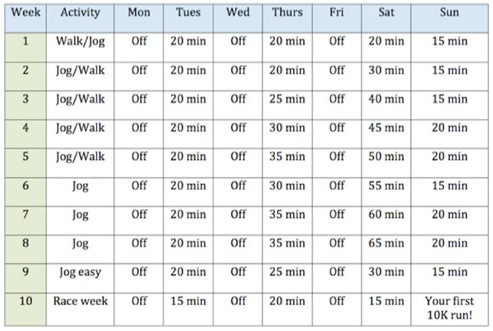By Tim Shuff
As an avid runner, teaching my new dog to run was at the top of my training to-do list. Many months later, the efforts have paid off for both of us. We now have a runner in the house who’s more dedicated than I am. My dog wakes to the sound of a quick-dry shirt being removed from a drawer three rooms away, and he never fails to remind me when I’ve let a day go by without running.
For every unwanted sniff break ‘Ranger’ has imposed on my jogs, he repays me by coaxing me out on a run I would have otherwise skipped. And now that my first baby is on the way, I’m confident that the imperative to “exercise the dog” has successfully fatherhood-proofed my running routine. The tips be-low sum up what I’ve learned from experience and consultation with other runners, dog-training experts and veterinarians.
1. Choose a running breed
Many breeds make great runners. Top running dogs include those from the Sporting, Hound and Working groups in the 20- to 40-kilogram weight range with light coats. Having said that, one runner I know, Jed Grieve of Victoria, B.C., would disagree. His nine-year-old Jack Russell Terrier ‘Bert’ weighs only 11 kilograms. He advises runners to get a small, short-haired dog.
The only dogs that are definitely not recommended for running are Toy breeds, giant breeds or brachycephalic breeds – flat-faced dogs with restricted airways.
Large or small, probably the best determinant of running ability is energy level. Seek advice from breeders to find a dog that’s well suited to running. Just know that the more energy a dog has, the bigger your daily exercise commitment.
2. Walk before you run
It’s a cliché but also true that you have to learn to walk before you can run, says Gillian Ridgeway, director of Who’s Walking Who Dog Training Centre in Toronto.
There is one essential skill your dog needs for running, and that’s knowing how to heel, or walk on a slack leash beside you, without pulling or crossing from side to side.
Perfect the heel at a walk, then gradually pick up the speed. Never jerk the leash or otherwise force your dog into position. Carry treats or toys and reward your dog for being in the correct spot. This makes running fun and teaches them, “When you’re beside me, great things happen for you,” says Ridgeway.
A second useful skill is being able to quickly get your dog to sit and stay any time you need to stop.
3. Use a harness
Use a standard leash for running, not a retractable one. Dr. Tom Gibson, an orthopaedic specialist at Guelph’s Ontario Veterinary College, says to attach the leash to a properly fitted harness or a head halter instead of a collar. A dog stopping to sniff while you’re running at speed can result in a jarring collar pull that damages the dog’s spine or other vital structures in the neck, Gibson says. Ridgeway recommends using one of the new “no pull” harnesses that have the leash attachment in front of the dog’s chest rather than on top.
4. Adults only
Strenuous exercise at too young an age can cause long-term injury. Wait until your dog’s bones are fully developed and the growth plates are fused before starting him on a running program. A guideline is to wait at least 18 to 24 months, but the age of skeletal maturity varies from breed to breed, so check with your veterinarian first and have your dog screened for other health issues at the same time. Follow up with annual check-ups for early detection of problems as your dog ages.
5. Build slowly
Like people, dogs need to be introduced to running gradually to build up cardiovascular and muscular endurance. Training a new dog is the perfect time to take up running yourself, because you can get in shape together. If you’re already a runner, start by taking your dog for easy runs on your recovery days only, or taking him out for your warm-up then dropping him off at home before continuing. Expect to make this adaptation again as your dog slows down in old age.
Ridgeway recommends hill training to build a dog’s strength and stamina (something that every serious runner knows and dreads). Throw a toy uphill from the bottom (not down from the top), and have your dog run uphill to retrieve it.
6. Keep them cool
Dogs don’t sweat like humans and have few areas where they can dissipate heat besides the tongue. On very hot days, slow down, shorten your route, or leave the dog at home for all or part of your run, particularly when there is high humidity.
Do not run in the heat of the day, between 9 a.m. and 6 p.m., and watch for signs of heat stress such as heavy panting with the tongue fully extended, and a slowing pace. Vets advise special caution during spring and early summer heat waves when dogs haven’t shed their winter fur and acclimatized.
Carry clean water and a collapsible dish, or teach your pet to drink from your bottle or hydration hose. Offer your dog plenty of water when he begins to pant. At the end of your run, let your dog rest, and cool him down with a hose or a 15-minute swim, if possible. Do not put your dog straight into a hot car after a run.
Dog owners must carry enough common sense for two; some dogs will literally run themselves to death to keep up.
7. Have patience with pacing
Respect that your dog may not want to run at the same pace that you do. Some dogs’ long-distance trot is slower than a fast runner’s gait. Gibson suggests that very fast runners bring their dogs only on recovery runs.
However, speed and distance are seldom an issue for healthy dogs. Jed Grieve runs with his dog 60 to 80 kilometres a week in peak season, on runs up to three hours. Over the past decade, Bert has kept pace with Grieve’s training for seven marathons and shows no sign of slowing down – or slowing him down. “Speed is never, ever, ever the issue,” says Grieve. “She’s basically one big muscle. It’s like taking your thigh and putting four legs on it.”
Interested in getting started?
Beginner Walk/Jog Program
May 19, 2009, By Kelly Caldwell
Think you can’t become a runner? Think again! Jogging is a great activity that reaps many benefits for both the body and the mind. Those of us who have caught the running bug always seem to be recruiting people into trying the activity. It’s important, however, to embrace the activity in the right way – and easing into running with a walk/jog program is a great way to do just that.
The following program, developed by Canada Running Series, is designed to get you up to speed for a 10K run, over the course of a 10-week training period. Yes, really!

If you have any concerns about your health, speak to your physician before beginning this (or any other) exercise regimen.
If you’re taking your dog along with you on your runs, be sure to monitor his progress as well. And please consult your veterinarian if you have any concerns about your dog’s level of fitness.
Happy trails!

